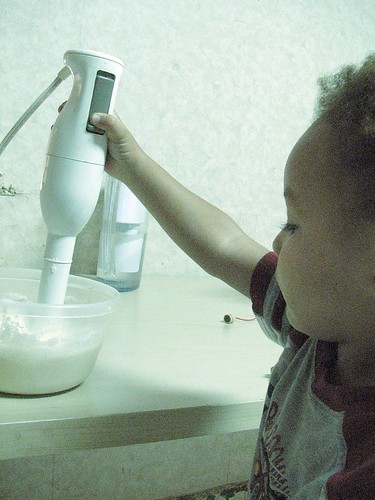Tis the season for winter greens and if you love your braising greens, organic kale or Georgia grown collards then I implore you, especially those of you who support local growers in whatever state you reside, and those who subscribe to CSAs (Community Supported Agriculture) from those local farms, to read the articles listed here, and read through the links at those sites as well to become as informed on the issue at hand as you possibly can.

The USDA was hearing comments on proposed legislature to regulate growing, packing and handling of leafy greens. The deadline for comments was Dec. 3, so we’re a little late jumping on the bandwagon. However we can still all write letters to our state and national representatives, because the reality is that there are more of us that depend on farmers, and increasingly on small and midsized organic farmers, than there are the few that grow what sustains us. They need our support. They need our voices, our dollars and our numbers. We all eat, and in this democracy, we can all have a say about what we eat. You have that power.
At the end I’ve listed steps you can take to make a difference (although in some of them we’ve missed the “due by” dates). This is only ONE issue affecting farmers, but one dear to my heart because as you know by know I adore and swear by leafy greens.
Let’s talk politics for a minute, because believe it or not, the government has a lot of influence on everything you put in your mouth and here’s YOUR chance to make a difference on national government policy. On the horizon looms sweeping legislature that appears under the guise of protecting consumers from outbreaks like last year’s nasty E. coli contamination from bagged spinach and salad mix. You know, those leafy greens that make life convenient but sadly were the cause of 200 individual illnesses and three tragic deaths of two older women and a child.
Well as Lane Liaw reported in a Nov. 29 article
“USDA considering first-ever leafy greens regulations” in the Santa Cruz Sentinel, the government is looking for input from consumers, that’s you and me folks, regarding practices to help make leafy green produce safer. The government WANTS to hear from us so let’s step up to the plate.

On the surface, voluntary regulation and “quality control” by growers sounds like a good idea. Especially when would-be policy makers use such lovely prose to describe their plan as “a regulatory program intended to maintain the quality of leafy green commodities by reducing the risk of pathogenic contamination during their production and handling,” as in the USDA’s Agricultural Marketing Service proposal in a
Federal Register announcement on Oct. 4, 2007. Since then, it has triggered a lot of resistance and criticism, and kicked off the Family Farm Food Safety Campaign.
This document details the possibly voluntary, potentially mandatory participation of growers in measures designed to prevent contaminations such as the E. coli outbreaks last year. However, critics say there is little suggestion to regulate handling and packing processes, which studies lead many to suspect are equal culprits in the case of contamination, if not the very fertile breeding ground for such contaminates. Critics also point out that in the USDA’s AMS proposal all farms and farmers, regardless of species of greens harvested or growing methods used get a blanketed treatment of rules.

But as Mark “Mental Masala” R. succinctly and eloquently breaks down in his Nov. 30, 2007 article
“USDA Requests Comments on Leafy Green Rulemaking” posted on Ethicurean.com these broad spectrum standards, which don’t differentiate between growers of small weekly organic mache harvests or massive monocultured spinach crops, may not only fail to protect public health, but may also threaten the small- and mid-sized farming community (which is where most organic farms fall), and cause an environmental “dead zone” by wiping out native plants and sterilizing (versus enriching) the soil. That in itself can make the once-fertile ground more susceptible to pathogens which then may go along for the ride on harvested greens, and can contaminate other greens delivered by farms from miles around in the huge commercial washing facilities, where they are then packaged and shipped nationally.
In that article, Mark does a good job of outlining the economic hardships on small and midsized growers who typically grow diversified crops as opposed to monocultured harvests which supports resistance to poor soil conditions, and the ineffective public health protection that the proposed USDA rules would have due to the packaging and shipping of greens, and not the farming practices. He writes,
“An additional danger is the possible assault on nature through the creation of ‘sterile zones’ — growing areas where all species except for the desired greens are wiped out. This will eliminate beneficial insects, helpful microorganisms, and habitat for animals.”
In fact, it looks like the only survivors if such non-specific legislature does get passed are the farm-factories that breed sterilized acres of soulless monocultured greens. While I admit I eat those too, my drive and inspiration as a chef and foodie come from those heirloom varieties, or organically produced produce or the locally grown seasonal crops of smaller farms.

For a local expert on national policies I reached out to
Georgia Organics Director Alice Rolls who said, “We are not favorable to the policy because it puts the burden on the farmers and not necessarily the handlers.”
Rolls agrees that some of the policies actively interfere with organic growers to support both their crops and their native habitats. “Sustainable farmers grow with biodiversity in mind to integrate surrounding habitats,” she said. “Some of these safety policies would potentially discourage wildlife in an attempt to keep animals off the farm.”
If you’re interested in the issue and its effect on small and midsized farms, which are largely responsible for seasonal organic locally grown produce, Rolls recommends you check out the Community Alliance with Family Farmers site. There you'll find information about the Family Farm Food Safety Campaign and you may also read the
CAFF’s response to the Federal Register Proposal.
Rolls continues, “It would also require small farmers to comply when some of these issues, which are really designed for the bigger corporate sized farms.”
To that cause, Liaw's article provides a little hope for a middle ground, writing that in February of 2007 the leafy green industry in California created the California Leafy Green Products Handler Marketing Agreement “designed to insure safe food practices by handlers, including grocers and food-service companies. Federal regulatory agencies had concluded that the E. coli contamination may have originated during the production process.” Measures such as this could take the focus off of the “dirty farm” fallacy and increase scrutiny at the processing, handling, packaging and shipping levels of food production, where contamination is more likely to occur.
The Family Farm Food Safety Campaign website criticizes the proposed regulations posting, “While all growers should use safe farming practices, the ‘one size fits all’ approach of the rules does not work for family farms.” The FFFSC holds the position that if the proposed rules become mandatory, they will hurt family farms and undermine efforts to farm in an environmentally responsible manner.

In the article
“Family farms may wilt under leafy-green law” for the Sacramento Bee Judith Richmond writes:
Much of California-grown "leafy greens," including spinach and lettuce, now go to the bagged salad mix market. This transformation from fresh to processed salads has created lucrative new and distant markets, but also has set the stage for heightened food safety concerns that do not exist with traditionally grown salad.
Since last year's terrible spinach E. coli outbreak that sickened 200 and took the lives of three, California's agricultural industry has worked overtime to create uniform "food safety" growing standards for leafy greens. The industry-driven Leafy Greens Marketing Agreement (LGMA) includes signatories from more than 100 handlers, shippers and buyers who promise to buy only from growers who meet these safety standards. For the more than 95 percent of California leafy greens growers who sell through these channels, the standards are now mandatory.
Soon all farmers who grow leafy greens in California may be required to comply with the LGMA. If this occurs, applying these standards across the board will not protect the public health or solve the state's E. coli problem, and could destroy our internationally heralded family farm economy.
How to make your voice heardBoth the
CAFF and
Cornucopia websites have sample letters that can help you formulate your comments.

 1. In a blender, or with a mixer, beat eggs and heavy cream with 1 TBS sugar until thick and foamy. Add spices, remaining sugar and milk and mix until incorporated.
1. In a blender, or with a mixer, beat eggs and heavy cream with 1 TBS sugar until thick and foamy. Add spices, remaining sugar and milk and mix until incorporated. 



